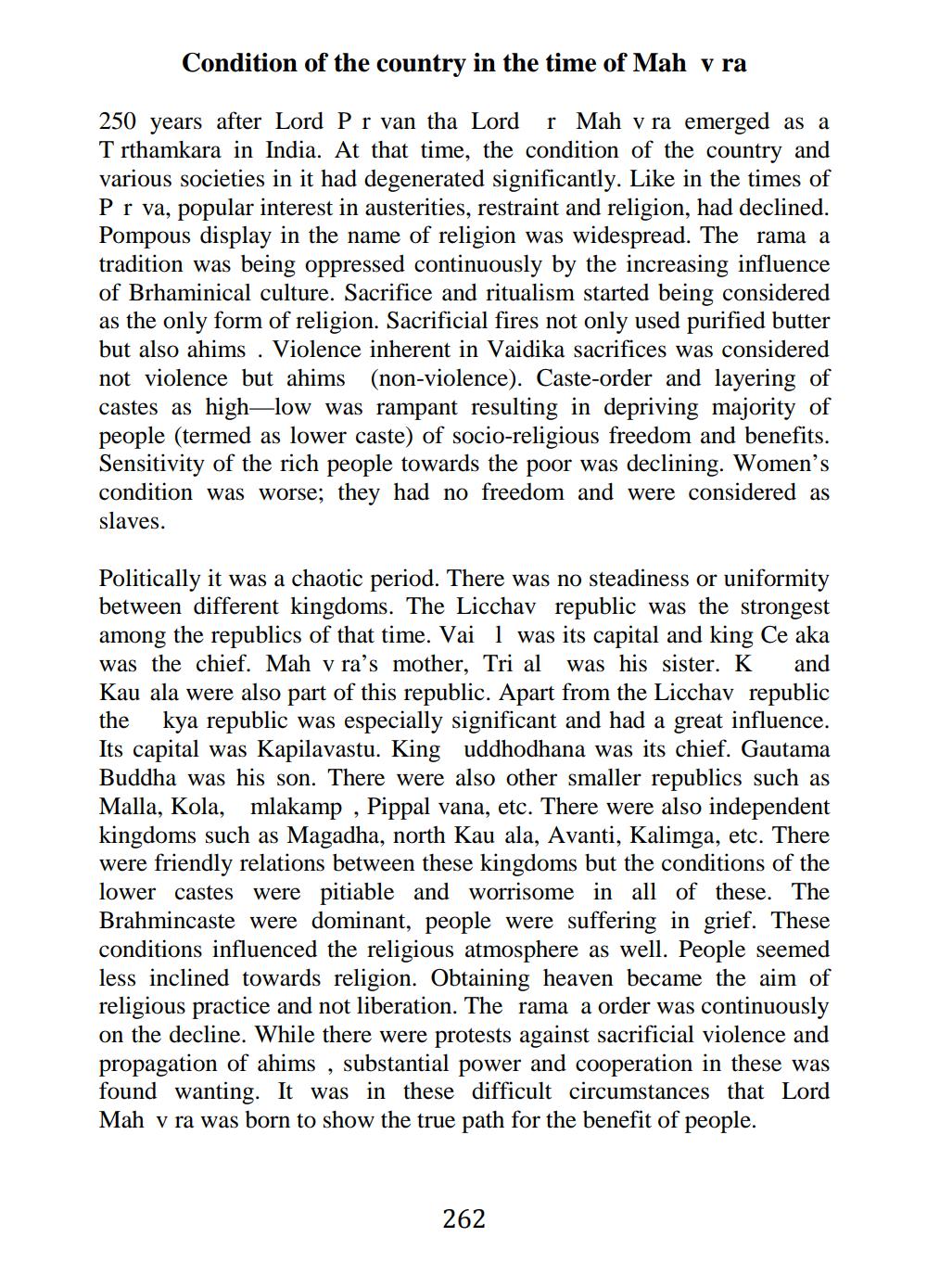________________
Condition of the country in the time of Mah v ra
250 years after Lord P r van tha Lord r Mah v ra emerged as a T rthamkara in India. At that time, the condition of the country and various societies in it had degenerated significantly. Like in the times of Prva, popular interest in austerities, restraint and religion, had declined. Pompous display in the name of religion was widespread. The rama a tradition was being oppressed continuously by the increasing influence of Brhaminical culture. Sacrifice and ritualism started being con as the only form of religion. Sacrificial fires not only used purified butter but also ahims . Violence inherent in Vaidika sacrifices was considered not violence but ahims (non-violence). Caste-order and layering of castes as high-low was rampant resulting in depriving majority of people (termed as lower caste) of socio-religious freedom and benefits. Sensitivity of the rich people towards the poor was declining. Women's condition was worse; they had no freedom and were considered as slaves.
Politically it was a chaotic period. There was no steadiness or uniformity between different kingdoms. The Licchav republic was the strongest among the republics of that time. Vai 1 was its capital and king Ce aka was the chief. Mah v ra's mother, Tri al was his sister. K and Kau ala were also part of this republic. Apart from the Licchav republic the kya republic was especially significant and had a great influence. Its capital was Kapilavastu. King uddhodhana was its chief. Gautama Buddha was his son. There were also other smaller republics such as Malla, Kola, mlakamp, Pippal vana, etc. There were also inde kingdoms such as Magadha, north Kau ala, Avanti, Kalimga, etc. There were friendly relations between these kingdoms but the conditions of the lower castes were pitiable and worrisome in all of these. The Brahmincaste were dominant, people were suffering in grief. These conditions influenced the religious atmosphere as well. People seemed less inclined towards religion. Obtaining heaven became the aim of religious practice and not liberation. The rama a order was continuously on the decline. While there were protests against sacrificial violence and propagation of ahims , substantial power and cooperation in these was found wanting. It was in these difficult circumstances that Lord Mah v ra was born to show the true path for the benefit of people.
262




